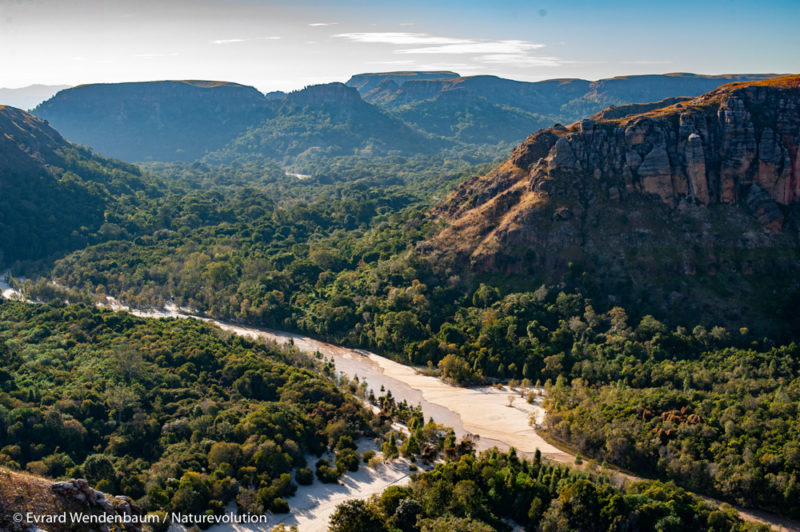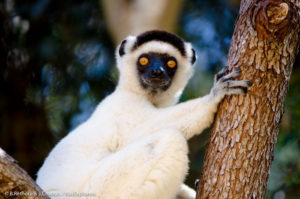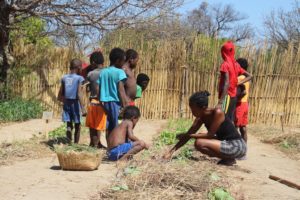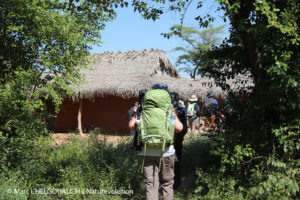The Makay massif is exposed to heavy anthropogenic pressure, mainly caused by intentionally started bushfires. Poaching and the harvesting of honey, tubers and palm trees also play a role in the degradation of ecosystems.
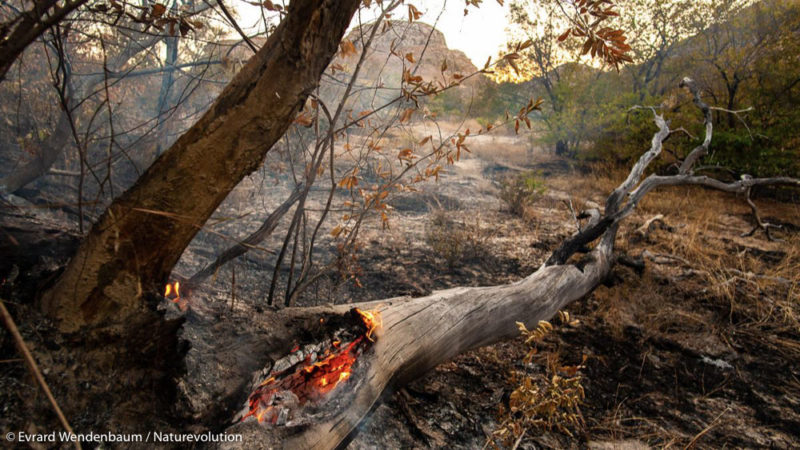
Bush fires
Bushfires around and within the Makay massif have several origins. In areas already used by villagers, they are a way of generating young plants that are appreciated by the zebus in the pastures, of restoring cultivated land that has been left fallow – “tavy” – or of “cleaning up” the area around a field.
It is estimated that since 2001, the Makay’s forest cover has decreased by around 500-600 hectares.
In a forested area, after the trees have been felled, fire is used to clear the land and create new plots, which are made fertile in the short term by the ashes. The Dahalos, or zebu rustlers, also use fire in the Makay to create a passage for the stolen herd and hide it inside the massif. In conjunction with the Dahalos phenomenon, fire is used to clear vegetation and make village surroundings safer.
It should be added that the destruction of forests by fire is sometimes not based on any rational or ancestral tradition, but remains a well-established cultural practice. Find out more about the origin of the Makay fires.
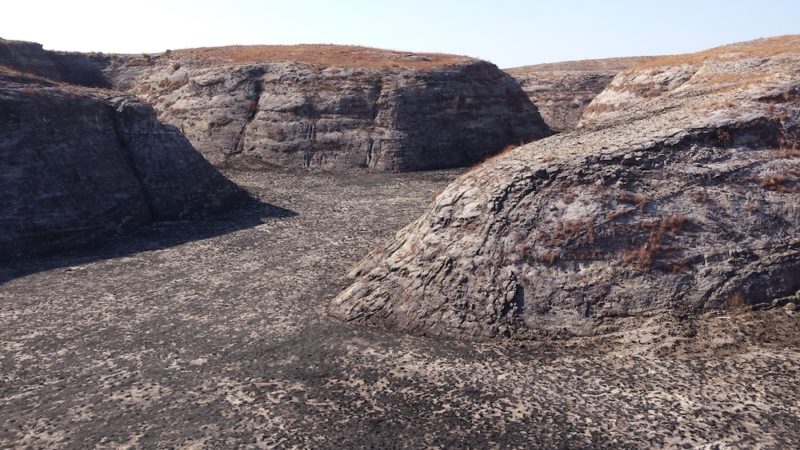
Poaching
Lemur trapping is practised in the Makay, most often using nooses (“laly” traps) set up at an obligatory crossing point between two trees. Larger, diurnal species, such as the Verreaux’s Sifaka and the Red-fronted Lemur, are the first targets of hunters. Lemurs are also hunted at night, dazzled by headlamps and shot with slingshots.
“Fandrika-andika” traps are also used to catch land animals, generally quadrupeds. The Fossa, a feliform carnivore, and certain species of birds of prey, accused of being a threat to farm poultry, are also captured near villages.
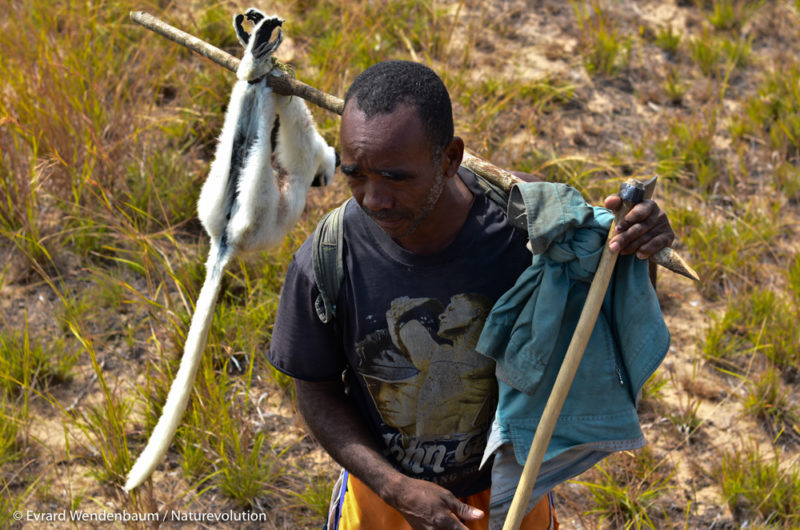
Illegal cutting
Forest wood is used for domestic purposes. Lumber and construction timbers are cut and processed before being evacuated. Les espèces exploitées sont surtout le bois dur Dalbergia sp. et le Canarium sp. Cette dernière espèce figure parmi les arbres important constituant le principal refuge alimentaire pour les lémuriens du Makay en général. So this type of extraction would seriously affect lemur populations. Not only a source of food, these large trees also form the vital and preferential supports for these animals. These activities are generally carried out to make up for the lack of family income among farmers.
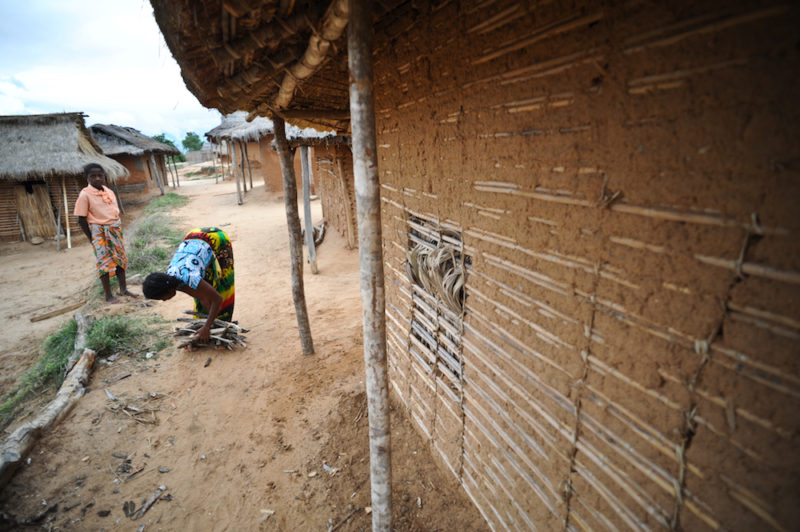
Mining exploration
National and international oil companies are interested in the Makay’s mining potential. In 2012, Tullow Oil, a British mining company, carried out a vast programme of geological studies over the entire area of the Makay, before abandoning the idea of exploiting it. « Almost half of the project area is dominated by the Makay ruiniform massif. It is impossible to trace a seismic line inside this massif because of the topographical structure (steep slope, difficult access) and the biological richness. ». Since obtaining temporary protected area status for the Makay in 2017, the Protected Area manager has been in dialogue with the ministry responsible for mines on the definition of hard cores, which would then be off-limits to any exploitation.

First progress
A number of local and regional collaboration agreements have been signed to protect the massif, with positive repercussions for certain villages: restrictions on poaching and bush fires, regulation of grazing areas for the zebusThese include controlling the harvesting of wood, reducing the number of fires and limiting beekeeping, which often destroys the swarm and even the supporting tree. These initial results, far from perfect, are encouraging.
Following a decade of involvement in the Makay, we have seen a reduction in bushfires, or even their complete cessation, in certain forests.
We noticed this progress during the Covid-19 epidemic, when the economic crisis and the end of ecotourism, combined with drought and a reduced presence of our team in the field, contributed to the return of fires.
